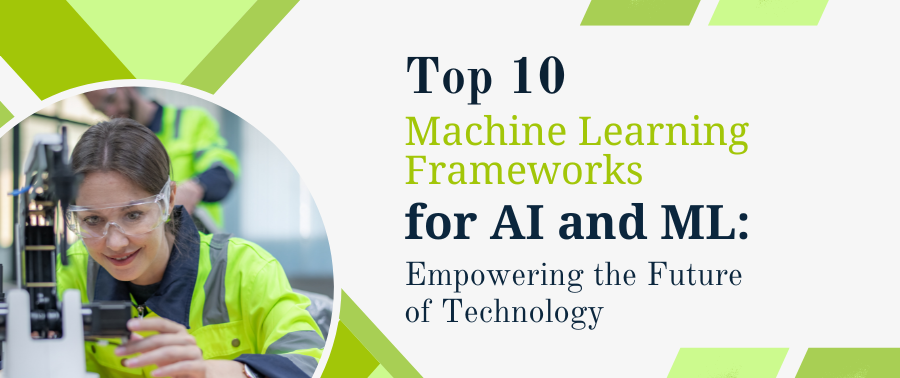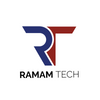Picture this: It is 2076 and there is a fatal viral outbreak across the world. Doctors are working round the clock but it isn’t enough. You are facing a health issue but no one is there to diagnose you so that you can treat it. This is where Machine Learning frameworks would come into play. Let us now see how this will happen and what ML frameworks will enable this in the future!
Welcome, technology enthusiasts, to an insightful blog where we delve into the 10 key Machine Learning frameworks that drive innovation in the realm of Artificial Intelligence (AI) and Machine Learning (ML) in 2023. Today, we will together navigate the fascinating and ever-expanding landscape of these frameworks, all while unraveling their significance and unparalleled impact in today’s world.
Now before we jump directly into these frameworks, let us first get an understanding of what Machine Learning frameworks, are and what is it they do that makes them so important!
Understanding Machine Learning Frameworks
In the simplest of terms, ML frameworks are tools that provide a launchpad for developing and deploying machine learning models. ML frameworks are known to offer a set of pre-defined functions, methodologies, and algorithms that enable the implementation of complicated ML tasks.
Long story short, these ML frameworks accelerate the development and deployment process of AI and ML solutions. How? Well, ML frameworks provide developers with readymade modules and libraries, saving hours of work. At the same time, ML frameworks can democratize AI and ML, opening doors for developers, and other technology enthusiasts like you to contribute to the ongoing AI revolution.
From predicting diseases to analyzing financial markets, ML frameworks serve a broad range of applications. They are believed to impact numerous work domains including Natural Language Processing (NLP), Autonomous Vehicles, Healthcare, Computer Vision, Finance, and various others.
Now you realize why Machine Learning frameworks hold such great power for the years that lie ahead. It is time we discover the top 10 of these frameworks that have the potential to revolutionize our years ahead.
10 Best Machine Learning Frameworks in 2023
1) Keras – Keras is an excellent choice for developers who look to use a user-friendly and intuitive framework. It is a high-level neural network API that provides a powerful interface for constructing and training deep learning models. This ML framework allows rapid prototyping and experimentation, allowing developers and researchers to iterate on their ideas in no time.
2) PyTorch – This ML framework has gained extensive popularity in the researchers’ community owing to its computational graph and easy-to-use interface. Users can make the most of its intuitive interface to express complex neural network architectures with ease. At the same time, it is a popular choice amongst upcoming developers owing to its already thriving community.
3) MXNet – MXNet is primarily recognized for its flexibility and scalability. This ML framework is perfect for several ML tasks. The key feature of MXNet is, it allows multiple programming languages and at the same time provides a high-level API, Gluon, simplifying the process of building and training neural networks from scratch.
4) Apache Spark MLlib – As its name suggests, MLlib is built on Apache Spark. This ML framework is primarily designed for distributed computing, providing a high-level API and a plethora of ML algorithms. Using MLlib, developers can perform a wide range of tasks including regression, clustering, classification, and recommendation systems on mammoth datasets in a scalable manner.
5) Caffe – Initially, Caffe was developed for vision-related tasks but over time, it has developed into a comprehensive learning framework primarily recognized for its speed and efficiency. The expressive architecture of this ML framework and intuitive configuration files lets users define and train deep neural networks without any hiccups.
Moreover, Caffe is known to offer a model zoo accessing which users can fine-tune pre-trained models, and facilitate relatively faster development and deployment of deep learning models.
6) TensorFlow – Arguably one of the most popular ML frameworks in 2023, TensorFlow was developed by Google Brain. Besides supporting deep learning techniques, TensorFlow is also adept at supporting machine learning techniques. The extensive community support, flexibility, and integration with other well-known frameworks make TensorFlow one of the best to use in this list of top 10.
7) Scikit-learn – Scikit-learn is an easy-to-use ML framework based on Python. It provides a massive collection of algorithms for a wide range of tasks including clustering, classification, data preprocessing, and a few others. Like many other ML frameworks, Scikit-learn offers a consistent API, comprehensive tutorials, and extensive documentation.
All these characteristics make it an excellent choice for both experienced practitioners and newcomers. Moreover, the versatility and usability of this ML framework are further enhanced owing to its integration with other libraries in the Python ecosystem.
8) Microsoft Cognitive Toolkit (CNTK) – CNTK is an extensively powerful deep learning framework that lays emphasis on scalability and performance. As its name suggests, CNTK is developed by Microsoft and offers greatly optimized algorithms and data parallelism techniques. CNTK is primarily suitable for large-scale ML applications such as Natural Language Processing, computer vision, and speech recognition owing to its performance and easy integration with Microsoft’s ecosystem.
9) TensorFlow.js – Doesn’t the name sound similar to TensorFlow? Well, yes, but it has got its fair share of uniqueness. TensorFlow.js allows developers like you to build and run ML models directly in the browser environment, bringing the power of TensorFlow to the web browser.
TensorFlow.js allows the integration of machine learning into web applications, enabling interactive and real-time experiences without any need for server-side computations. At the same time, using TensorFlow.js, one can perform tasks such as sentiment analysis, object detection, and image classification on the client side.
It ranks amongst the top 5 ML frameworks when it comes to popularity among developers and researchers due to its versatility and accessibility.
10) Theano – This ML framework is a library enabling efficient mathematical computations, especially suited for deep learning tasks. The optimization capabilities of Theano make it well-suited for training and deploying complicated neural networks.
Sadly, the development of Theano has now been discontinued but over the years that have passed by, Theano has had a notable impact on the deep learning ecosystem. In the past, Theano served as an excellent foundational framework for subsequent advancements in the field of Machine Learning.
Final Word
Machine Learning frameworks now go hand-in-hand with the latest developments in the world of AI and ML. These tools empower developers and researchers to leverage the potential of ML techniques. Owing to the scalability, accessibility, and astounding capabilities of ML frameworks, AI advancement has become a reality.
Apart from these 10 Machine Learning frameworks, there are numerous others too that are popularly used across the world such as Amazon Machine Learning, Google Cloud ML Engine, Spark ML, and others. In the years to come, we will be able to unlock new horizons of innovation in the realm of AI, using ML frameworks as a launchpad.
The future is now. So, let us embrace these new-age tools and shape a world of endless possibilities, where limits are non-existent.







Top comments (0)